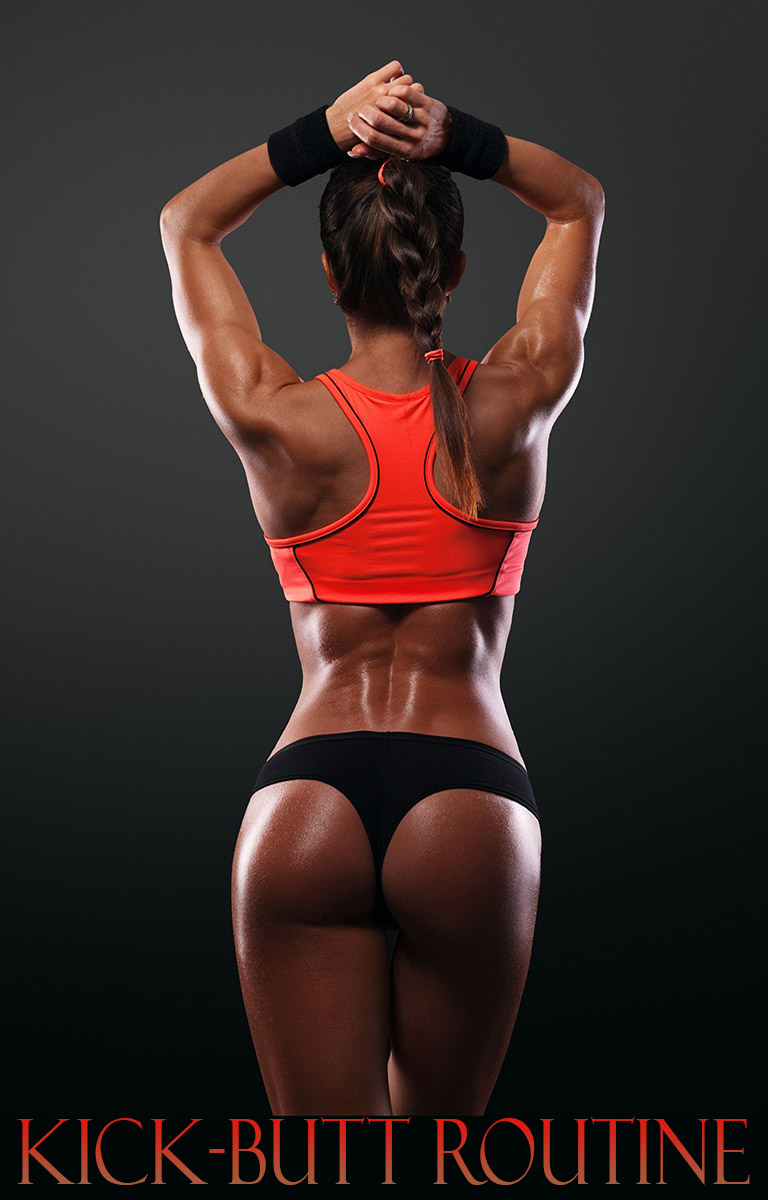
There are two ways to acquire a great pair of glutes: (1) luck in the form of great genetics, i.e., the girl who had a great butt when she was 15 (long before ever stepping foot in a gym), and when she was 25, and when she was 35, and so on; and (2) by training them aggressively, then training them aggressively again, and again, and again — in other words, via sweat equity over the long term.
If you’ve got great genetics, congrats. We’re extremely jealous. If not, we’re going to show you how to train your glutes intelligently as well as aggressively so that even if you don’t have stellar genes, you can still look fabulous in your jeans.
Back to Basics
The first part of the equation is picking the right exercises. Now there’s nothing inherently wrong with your gym’s glute-blaster machine, in which you press your feet back behind you by contracting your glutes to extend your hips. But that’s an isolation/detailing move, and real glute progress is made by squatting and lunging. These multi-joint exercises and all their variations should make up the foundation of your leg and glute training.
In the below routine, squats and lunges are represented in full force, as are step-ups, another tried-and-true move that’s great for targeting the butt. Jump squats are a variation that will add a heavy dose of intensity and explosiveness to your routine to shock — and, of course, shape — a stubborn pair of glutes. The three-way lunge hits the posterior muscles from all angles to ensure that all the bases are covered. The finishing exercise in the routine is the Romanian deadlift, which in addition to hitting the glutes, it also targets the upper hamstrings that overlap in that area.
As you might expect, rep ranges are relatively high at no fewer than 12 reps per set. Rest periods are short (30 to 60 seconds between sets) to keep intensity high throughout the workout. Your glutes will be on fire, for sure, but this is what will sculpt and firm them up. Because of this intensity, feel free to start off with very light weights, but as the sets become easier, increase resistance — even if just by 5 to 10 pounds — to keep your muscles progressing.
For best results, we recommend training legs/glutes twice a week. If you’re unable to perform the workout below that often because of fatigue, decrease the number of sets you do on the second day and consider substituting different squat and lunge variations (Smith machine squats, leg presses, bodyweight lunges, etc.) to hit the muscles from different angles.
Butt Blasting
Outside of lifting, cardio is another key component to sculpting great glutes because it not only will work the muscles in a different manner but also will help burn stubborn posterior body fat. High-intensity intervals and steady-state cardio are effective, and we suggest you alternate the two for four weekly cardio sessions. (See sidebar on Page TK.) For example, do intervals on Monday and Thursday and steady-state on Tuesday and Friday. In that case, do your leg workouts either on steady-state cardio days or on noncardio days.
Try the below Kick-Butt routine for the next four weeks and see if it doesn’t enhance your rearview via major compound moves and good old-fashioned hard work. Because outside of those ever-elusive genetics we all wish we had, that’s the only way to get the glutes you desire.
Kick-Butt Routine | ||
|---|---|---|
| Exercise | Sets | Reps |
| Jump Squat | 3-4 | 15-20 |
| Dumbbell Step-Up | 3 | 12 per leg |
| Dumbbell Three-Way Lunge | 3 | 30* |
| Romanian Deadlift | 3-4 | 12-15 |
| Limit rest periods to 30 to 60 seconds between sets. *Ten reps each (five per side) of walking lunges, side lunges and reverse lunges for a total of 30 reps. | ||
Jump Squat
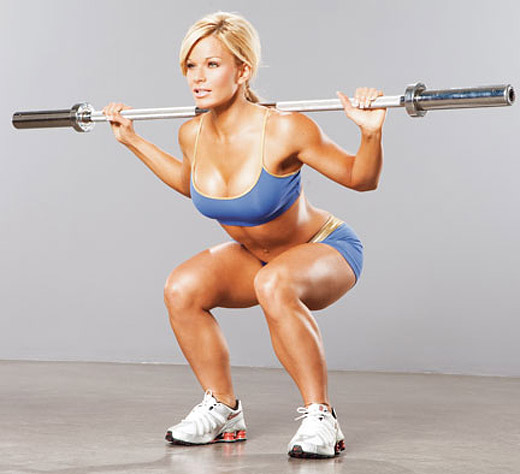
Targets: glutes, quads
Start: Stand holding a light barbell across your upper traps like you would for regular squats. Begin with your feet shoulder-width apart, flat on the floor.
Action: Slowly lower down into a squat, keeping your chest out and back flat, until your thighs are parallel to the floor, then explode up as fast as you can so that your feet leave the floor at the top of the motion. Land with your knees slightly bent (not locked out), settle yourself and go right into the next rep.
Dumbbell Step-Up
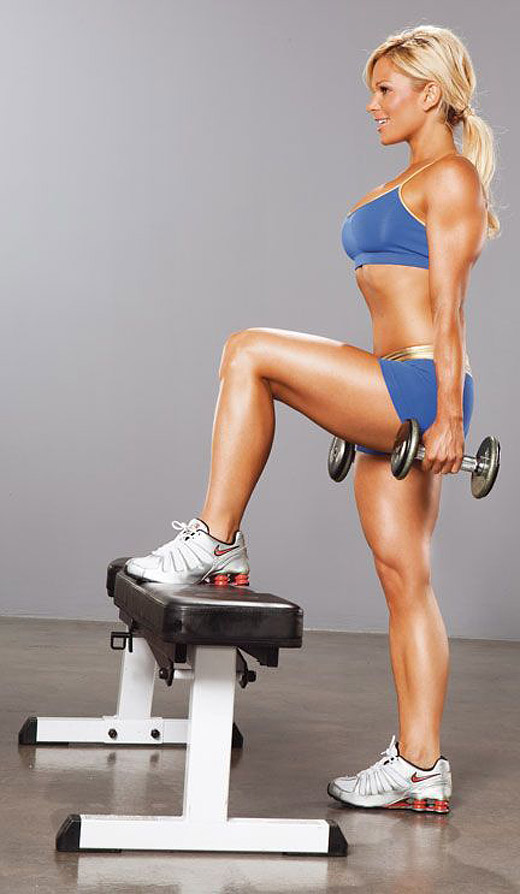
Targets: glutes, quads
Start: Hold a pair of dumbbells at your sides, and stand facing a sturdy bench or plyometric box.
Action: Step up onto the bench with one foot, and forcefully press down into the bench to raise your body up until the working leg is fully extended, then lower yourself back to the starting position. Alternate legs every other rep until the prescribed number of reps is completed.
Dumbbell Three-Way Lunge

Targets: glutes, quads
Start: Stand holding a pair of dumbbells at your sides with your feet close together. Make sure there’s enough open floor space in front of you to walk forward at least 30 feet.
Action: Take a large step forward with one foot, bend that knee and lower the opposite knee toward the floor directly below you. When your front thigh reaches parallel with the floor, stand up while bringing the back foot forward so that it’s next to the other foot in the standing position. Repeat for reps, alternating legs every other time. After doing 10 walking lunges (five per leg), perform stationary lateral lunges by lunging straight out to the side and returning to the middle for another 10 reps (five to each side). Then do 10 stationary reverse lunges by taking a step backward instead of forward each rep. Ten reps each of walking lunges, lateral lunges and reverse lunges equals one set.
Romanian Deadlift
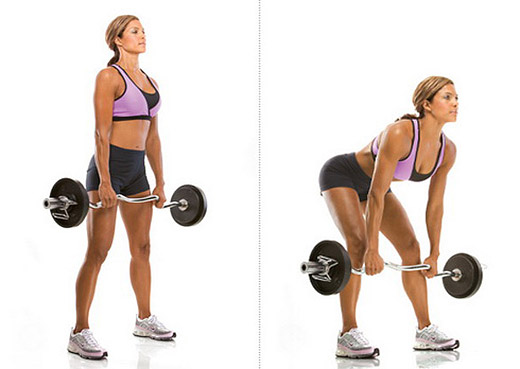
Targets: glutes, hamstrings
Start: Stand upright holding a barbell in front of your thighs with a shoulder-width grip.
Action: With your back flat and knees slightly bent, bend at your waist to lower the bar straight toward the floor, sliding it down your legs. Keep your knees in the slightly bent position and your arms straight throughout the movement. When the bar reaches about midshin level (how far you can lower it depends on your flexibility), contract your glutes and hamstrings to pull yourself back up to the start position.
Glute-Blasting Guidelines
>>Know Your Range. When trying to target the glutes, short ranges of motion will blunt results, as maximum range of motion means maximum gluteal involvement. On squats (all variations), go down to at least parallel on each rep. On lunges, take big steps, not short ones. On step-ups, consider using a higher bench or plyometric box to increase your range of motion, especially if you’re tall.
>>Cardio Cues. There’s no need to reinvent the wheel when doing cardio — just make sure you do it. A simple yet challenging interval routine consists of alternating one minute of fast running with one minute of walking for 20 minutes. For steady-state cardio, 30 minutes on the elliptical, stair stepper or treadmill (jogging) should do the trick. Alternate these two workouts for four weekly sessions.
>>Keep Things Fresh. Don’t feel like you need to be locked into the same exercises with the same equipment every workout. If you did barbell squats last workout, do dumbbell squats next time. Instead of dumbbell lunges, do barbell or Smith machine (stationary) lunges. The more variety you can incorporate over the long term, the less likely you’ll be to get bored and the more well-rounded your program (and your glutes) will be.


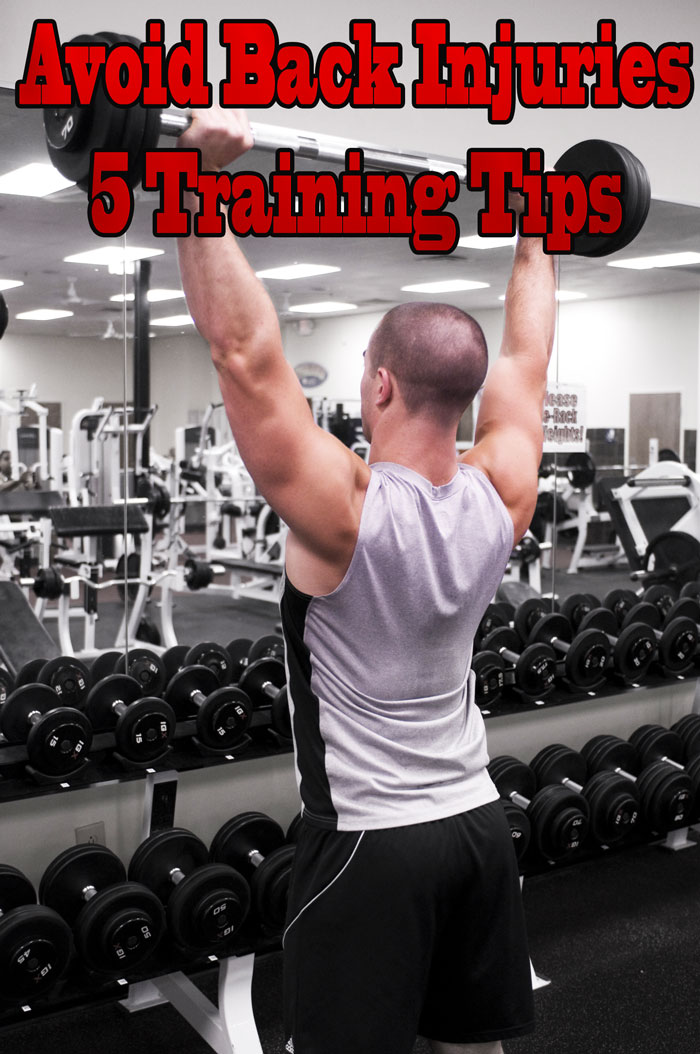
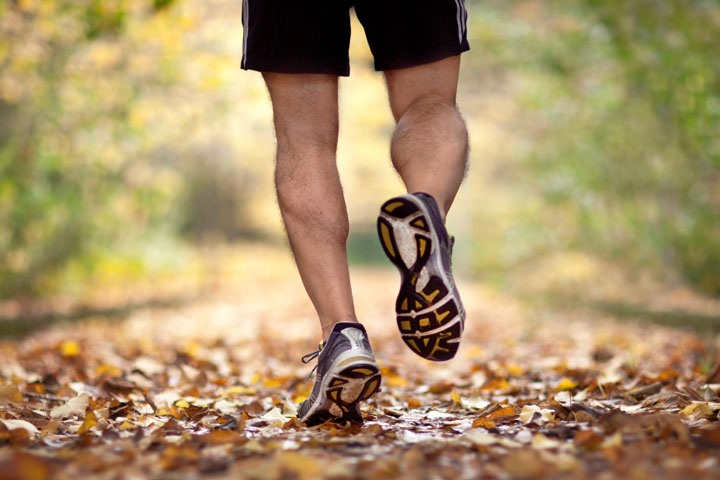

Leave a Reply